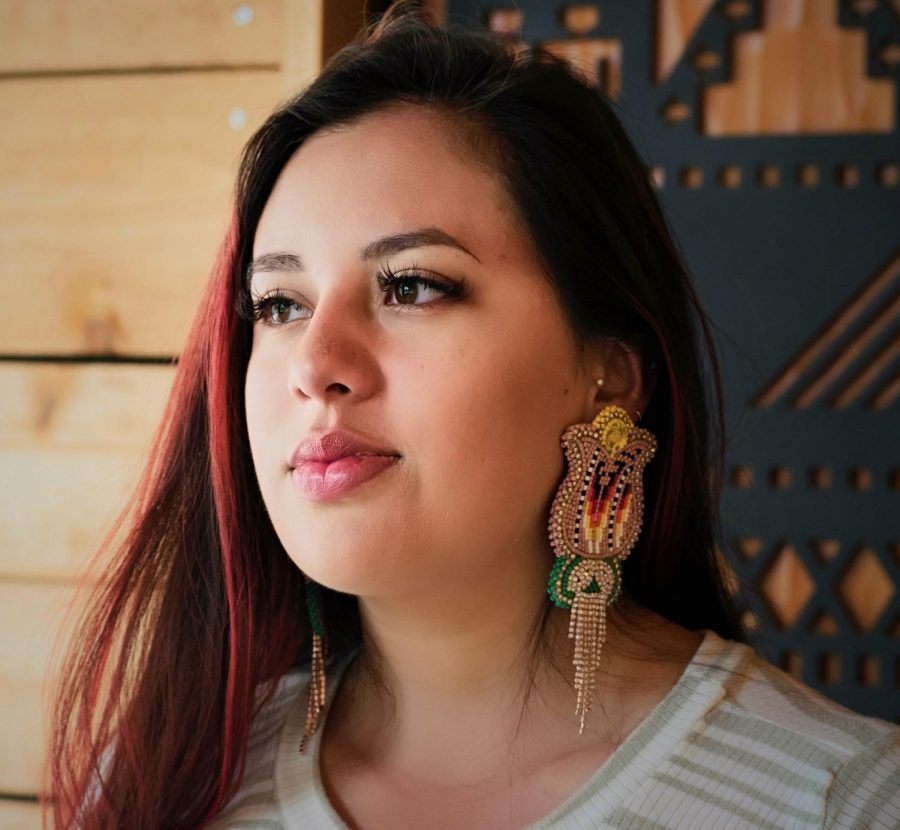Breaking Barriers
August 17, 2018
Over the years, there has been an “ideal beauty standard” that has been perpetuated in our media. There is this perception that if you don’t look a certain way, you are not enough. However, beauty is whatever you decide to make of it. I interviewed some incredible people through the various cultural centers on campus to get their opinion on how they see themselves in the media.
Ameyalli Manon
“I identify as an indigenous woman. My mom is Osage Nation and my dad is Mazahua from Mexico. My first introductions to fashion was through my family. My aunties and my mom would make my clothes and moccasins for ceremony. The earrings I’m wearing today are powwow earrings and they come from the show side of competition dancing. Beading is a big part of our culture and we usually plan our outfits around our jewelry. Sometimes Native women will wear ribbon skirts which come from the shape of a tepee to represent that connection to the Earth. I wore this today because the long skirt is something that indigenous women do for ceremony or other important events. What disturbs me is that around Halloween time, some people will dress up like my culture and make a mockery of it, and it makes me mad because Native women are overtly sexualized, so when I see someone dressing up like me I will always speak up about it”.
Clarice Hutchinson
“Growing up, I’ve always been a bigger person, I’ve always been tall. When I was younger, there was no representation on people like me. Middle school was hard because I had a tummy, thighs, and a butt. The media told me that you can’t have those things. There have been more plus size models, but there’s an ‘ideal plus size model’ now. You don’t see the stretch marks and there is so much photoshop in our media. I break the ideal beauty standard by buying what I want to wear. I just bought a crop top and I’m really proud of myself. I’m starting to wear more clothes that society says are ‘unconventional’ for me”.
Nathan Stewart
“I’m multiracial and I am a graphic design major. I have built a style over time by developing my own self-confidence which has also helped my design skills. Since I am multiracial, I feel like I don’t have to attach myself to a certain fashion. My fashion is based around the best deal and who is manufacturing it. I didn’t start dressing for myself until high school. I started to not care about what people would say about me, because I don’t think about how different I am anymore. I might differ from mainstream fashion, but at least I’m me”.
Raven Waldren
“I am Diné, which is known as the southwest indigenous Navajo culture. I don’t think that there is representation of indigenous culture in the media, unless it is pan characterized which is usually just a melting of native traits when in reality there are many different characteristics to each tribe. I wore turquoise jewelry, because it is made from the land I am from. Turquoise reminds me of my grandma because I associate it with my elders. A big component of indigenous culture is that everyone helps get you ready which means that style and fashion is a communal thing. I have moved towards having my culture represented into everything I wear now. Under my wrap, I’m wearing my ‘No More Stolen Sisters’ shirt to represent the missing and murdered indigenous women. I love supporting native artists and native issues. My clothing is a way of expressing myself. What I wear today represents me and my family, so when someone who is not Native dresses like me in costume I find it infuriating because they don’t understand the significance of each article of clothing”.
Sophia Kea
“I am a multiracial Latin American and South East Asian female. I wore this today to represent body positivity. I like showing my skin because it is comfortable for me. I am really acceptable of my blemishes and myself. I think there’s more representation coming out, but I feel like there are still a bunch of stereotypical roles. I wish there were more multiracial people in the media because I feel like we aren’t represented. I think that being of two racial identities enables me to do things for me. Sometimes I would try too hard to fit into one cultures societal standards, and through that process you tend to lose your own individual identity and growing from that I’ve been able to own my unique character”.
Photography by Jen Dirstine and Sienna Kaske


